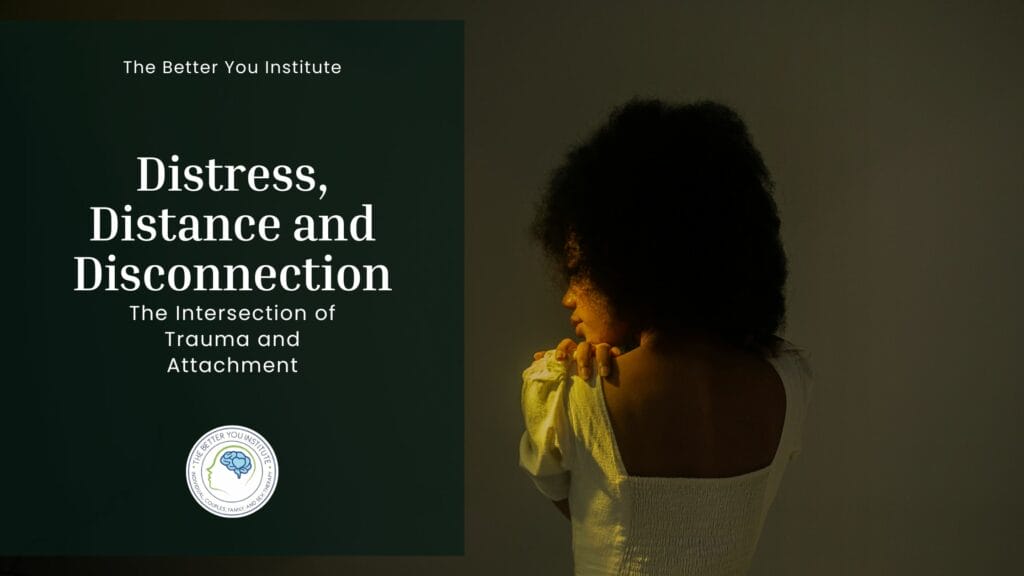When your body and mind are escalated or going through an intense experience, you probably feel unsettled or ungrounded. What are some go-to tools or methods that help you get back to baseline and calm yourself? For example, suppose you’re having high anxiety, flashbacks, panic attacks, strong urges that are usually harmful (cutting, drug use, punching self, etc.), intense anger or sadness, or dissociating. In that case, this is where grounding techniques can come in handy and be beneficial to resetting or balancing yourself.
Grounding techniques are coping strategies that help you connect back to the present moment, momentarily detach, or distract from your emotions. Once you feel more grounded and less escalated, you can return to the situation or emotion more healthily. This article will discuss the importance of using grounding techniques, different types of grounding skills, and provide hands-on grounding exercises.
Table of Contents
What does it mean to ground yourself?
Grounding does not just mean telling ourselves to calm down, and then we magically calm down. Instead, grounding ourselves involves the repeated practice of exercises and an understanding of what works or doesn’t work for us. When we are grounding, we anchor ourselves back into our body, the moment, or the task at hand, to ultimately feel more in control of ourselves and decrease the emotional experience that leaves us feeling out of control.
Grounding techniques range from literally taking off our shoes and socks and putting our feet on the ground for an actual connection to the earth to using our whole body, including our five senses. Using our body as a grounding resource, we can be more present in our surroundings and snap back to reality. When we feel escalated, we are often overstimulated emotionally or physically. Grounding techniques help our body become destimulated and get back to baseline.
When we are disconnected from our mind (think dissociating or avoiding) or our body (think freezing up or having panic attacks), it can be hard to stay grounded. Our nervous system gets triggered and puts us in a fight/flight/freeze/fawn mode where we are not feeling present or like our usual selves. We become more dysregulated.
The use of grounding for mild triggering situations is worthwhile. It’s also an excellent extra kick or jolts to become centered or back in our own body when we experience more escalated triggers. With grounding techniques, we can have a tool to check us back into our mind and body and return to a more regulated state. Since our mind and body are almost always in motion, grounding can be a way to slow down and proceed more mindfully in our day.
Questions to ask yourself:
- How do you know you’re grounded? What does it feel like to you?
- How long does it take you to feel grounded after an intense emotional experience?
- What has helped you ground yourself or return to a more calm state?
- What has gotten in your way of returning to a grounded state?
- Do you respond more mentally (ex: criticizing, disorganized thoughts, zoning out), emotionally (uncontrollable sobbing, depressed to the point of not getting out of bed), or physically (ex: panic attacks, punching self or things, feeling faint) to triggers?
- How do you describe your reactions and coping after stressful or emotional moments?
- How have others described your reactions and coping after stressful or emotional moments?
Different types of grounding techniques
The three grounding styles are Mental, Physical, and Self-soothing. These grounding styles can be used individually or in combination with one another. Below are descriptions and examples of the three different grounding technique styles.
Mental grounding
Mental grounding is where we work on focusing our minds on helping calm us down. Focusing our mind can be used when we are in a disorganized or chaotic mental state and disconnecting from reality. Times we may experience this disconnection can include having racing thoughts, flashback images from a trauma, or if we are dissociating. Examples of mental grounding include:
- Using imagery – Picturing a pleasant or relaxing place like the beach, your best friend’s smiling face, or your pet
- Playing a categories game – Picking a topic and listing all the names or categories in that topic. An example here could be naming all the animals in a zoo, naming the presidents, listing all the Netflix shows you’ve binged
- Counting backward from 10 or even 100 (you can play around with what number you need to go to until you feel calmer)
- Singing (or talking out) your favorite song
- Reciting a favorite story or poem
- Reading an engaging or funny book
- Talking yourself through an enjoyable daily activity in very descriptive detail
Physical Grounding Techniques
Physical techniques focus more on centering the body, so think of your senses and breath. These can be used when experiencing panic attacks, out-of-body feelings, or urges to hurt yourself.
- 54321 exercise – Identifying and saying out loud 5 things you can see, 4 things you can touch, 3 things you can hear, 2 things you can smell, 1 thing you can taste
- Holding ice cubes in your hands until they melt
- Taking a really cold or scorching shower
- Using Progressive Muscle Relaxation
- Finding a grounding object that you can bring everywhere and that has a soothing effect (small rock, small fidget toy, small cloth)
- Going outside to lay on the grass or sand if you’re at the beach and notice your 5 senses
- Using box breathing (breath in for 4, hold for 4, breathe out for 4, hold for 4 and repeat this at least 3 times)
- Hugging yourself, your partner, your best friend, or your pet
- Going for a run or dancing and noticing your heartbeat or how your body moves to rhythms
- Noticing how your body feels in the chair you’re sitting in or the clothes you’re wearing
Soothing Grounding Techniques
Self-soothing techniques focus on positive moments or experiences, having positive self-talk, and showing ourselves compassion. These techniques can help when we are stuck in a negative self-talk cycle and can look like us shifting our self-talk or engaging in helpful self-care.
- Challenging and shifting your self-talk – It can help to imagine what you would tell a friend or a small child who is talking negatively to themselves and try to take your advice
- Showing yourself compassion through a hug: Hugging yourself or a person you love. Or your pet!
- Picturing someone you love or looking at pictures or videos of them
- Creating a safe, soothing statement or coping statement. An example can be “I am safe at this moment,”… “You are loved,”… “This feeling/moment will pass.”
- List or envision positive people or things in your life
- Using prayer or spiritual scriptures that uplift you
- Play a song that is uplifting, soothing, or holds positive meaning to you
Questions to ask yourself:
- What techniques resonated with you?
- Did this list spark any more ideas from you? If so, what are they?
- Are there some grounding techniques you already use? How well do they work for you?
- If you could pick at least 1 example technique from each category, which ones would you choose?
- Can you set a start date this week to begin practicing at least 1 technique?
- Are there family or friends you can invite into the space to remind you to practice these grounding techniques? Or allow them to encourage you to use the method if they notice you are becoming ungrounded?
Some of these examples from above may overlap in each of the categories. It’s vital to start recognizing the tools you may already be using so you can enhance or add to them.
How to begin using grounding skills
The biggest takeaway is to practice! The more you practice and build up the habit of engaging in the techniques, the more beneficial they will be. Here are some additional steps to engage in to perfect your calming abilities:
-
-
- Start by picking at least 1 technique from each grounding style discussed above. If there are techniques you are already familiar with, it may be easier for you to start using them daily or weekly. Are there some grounding techniques you’ve never heard of or considered using? Get curious about what will work for you and the new suggestions you can use. Give yourself grace. Remember, if the grounding technique does not work the first time, that does not mean it’s ineffective, so don’t brush it off immediately. Instead, give it another go at a different time and see if there’s a change. You may find it helpful to practice the technique that didn’t work at first at a time that feels mildly overstimulated rather than highly triggered.
-
- Pick a start time and practice the technique at least once or twice weekly. The sooner you become familiar with the method, the easier it can be to engage in it effectively. Explore times when it is easier for you to implement the grounding technique over other times. Why do you think this is? Why did you need the grounding technique? What was going on? Was the grounding technique matched to how escalated you were or to why you became escalated? For example, if you had racing thoughts, you might want to try a mental grounding technique, vs. if you’re at the start of a panic attack, you may want to try a physical grounding technique.
-
- Rate your emotions before and after you engage in the grounding exercise, especially when having a very distressing or emotional experience. Don’t worry if you can’t apply this in the heat of the moment. Even if you reflect on your experience, rating your emotions will be helpful for future occurrences. You can use a 0-10 scale where 0 is the best you’ve felt, and 10 is the worst you’ve ever felt. Try using this scale when you feel grounded to help you gauge what feels comfortable or improves your mood even in that space. By doing this at baseline, you better determine the techniques that work best for you.
-
- Journal your thoughts and reflections about the experience and how grounding helped you. What was most helpful? What was least helpful? What did you notice about your mind/body? What would you do the same? What do you want to change for the future?
-
- If comfortable or appropriate, share the tools that best work with your partner or a loved one so they can help encourage or instruct you to engage in the technique. Self-disclosure like this is especially helpful if you are in a place of dissociation or dysregulation, where it can be harder to know what to do or remember what works.
-
- Write the techniques on your phone, a small notebook, or an index card. Keep the methods that work for you close by so you can quickly read the tools without having to rack your brain to find something and cause more anxiety or distress.
-
Grounding is not the final part of your experience. It is best if you still go back to the event, task, or feeling to process it and figure out the warning signs, triggers, and valuable coping skills. The idea of grounding is to temporarily decrease emotional distress, help you distract or healthily detach from the emotions, and feel more present and aware of your mind, body, and inner dialogue. It’s there to help us anchor and come down from the escalation so we can return to the moment in a calmer, safer, and less distressing place. It can be helpful to start or share this practice with a trusted friend or therapist.
If you’d like to learn more about grounding techniques. Or learn a powerful and effective tool for coping with anxiety, distress, trauma, self-harm urges, and other intense emotional experiences; feel free to contact us at The Better You Institute at 267-495-4951. One of our trained therapists will help you on this journey!
Meet The Author:

Caitlin Siekerka
Licensed Professional Counselor
Caitlin Siekerka, LPC, a Licensed Professional Counselor in Pennsylvania and New Jersey, is dedicated to guiding individuals on their path to finding meaning and purpose. She uses a compassionate, empathetic approach in therapy, helping clients achieve balance and develop coping skills. Specializing in depression, anxiety, self-esteem issues, bipolar disorder, grief, trauma, life transitions, and substance use, Caitlin offers personalized therapy using techniques like CBT, DBT, and mindfulness. An LGBTQ+ ally, she creates a safe space for growth and exploration in Philadelphia. Caitlin holds a master’s in Counseling Psychology from Rosemont College, continually educating herself to provide the best support.
Learn more about Caitlin Siekerka ⇒







